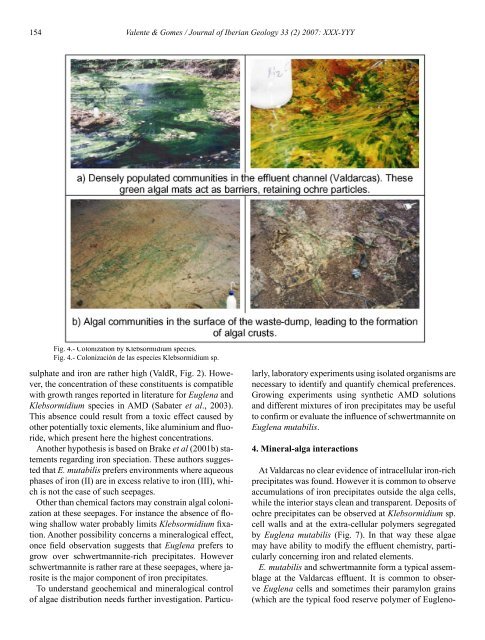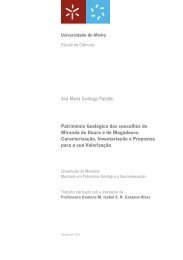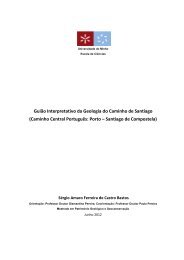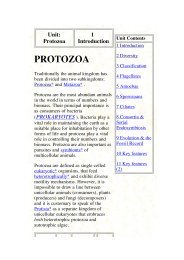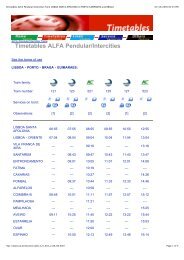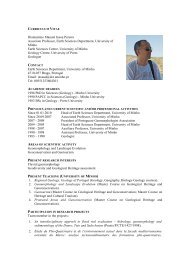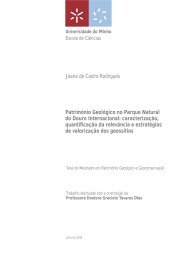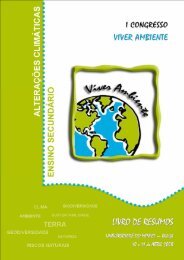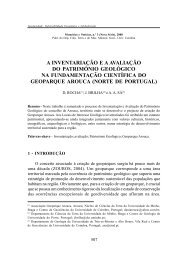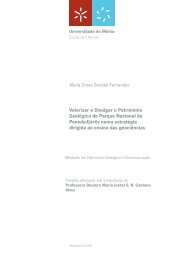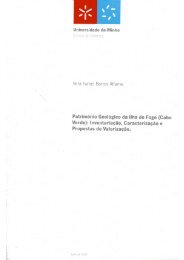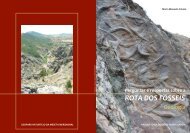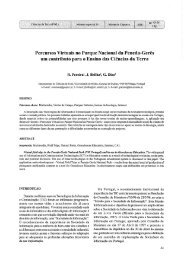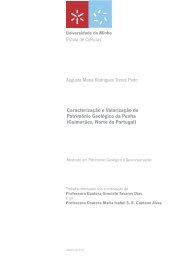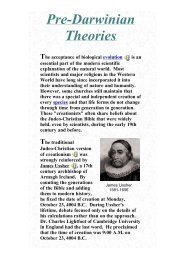Descarregue o Livro do Curso a partir daqui - Departamento de ...
Descarregue o Livro do Curso a partir daqui - Departamento de ...
Descarregue o Livro do Curso a partir daqui - Departamento de ...
You also want an ePaper? Increase the reach of your titles
YUMPU automatically turns print PDFs into web optimized ePapers that Google loves.
154 Valente & Gomes / Journal of Iberian Geology 33 (2) 2007: XXX-YYY<br />
Fig. 4.- Colonization by Klebsormidium species.<br />
Fig. 4.- Colonización <strong>de</strong> las especies Klebsormidium sp.<br />
At Valdarcas no clear evi<strong>de</strong>nce of intracellular iron-rich<br />
precipitates was found. However it is common to observe<br />
accumulations of iron precipitates outsi<strong>de</strong> the alga cells,<br />
while the interior stays clean and transparent. Deposits of<br />
ochre precipitates can be observed at Klebsormidium sp.<br />
cell walls and at the extra-cellular polymers segregated<br />
by Euglena mutabilis (Fig. 7). In that way these algae<br />
may have ability to modify the effluent chemistry, particularly<br />
concerning iron and related elements.<br />
E. mutabilis and schwertmannite form a typical assemblage<br />
at the Valdarcas effluent. It is common to observe<br />
Euglena cells and sometimes their paramylon grains<br />
(which are the typical food reserve polymer of Euglenosulphate<br />
and iron are rather high (ValdR, Fig. 2). However,<br />
the concentration of these constituents is compatible<br />
with growth ranges reported in literature for Euglena and<br />
Klebsormidium species in AMD (Sabater et al., 2003).<br />
This absence could result from a toxic effect caused by<br />
other potentially toxic elements, like aluminium and fluori<strong>de</strong>,<br />
which present here the highest concentrations.<br />
Another hypothesis is based on Brake et al (2001b) statements<br />
regarding iron speciation. These authors suggested<br />
that E. mutabilis prefers environments where aqueous<br />
phases of iron (II) are in excess relative to iron (III), which<br />
is not the case of such seepages.<br />
Other than chemical factors may constrain algal colonization<br />
at these seepages. For instance the absence of flowing<br />
shallow water probably limits Klebsormidium fixation.<br />
Another possibility concerns a mineralogical effect,<br />
once field observation suggests that Euglena prefers to<br />
grow over schwertmannite-rich precipitates. However<br />
schwertmannite is rather rare at these seepages, where jarosite<br />
is the major component of iron precipitates.<br />
To un<strong>de</strong>rstand geochemical and mineralogical control<br />
of algae distribution needs further investigation. Particu-<br />
larly, laboratory experiments using isolated organisms are<br />
necessary to i<strong>de</strong>ntify and quantify chemical preferences.<br />
Growing experiments using synthetic AMD solutions<br />
and different mixtures of iron precipitates may be useful<br />
to confirm or evaluate the influence of schwertmannite on<br />
Euglena mutabilis.<br />
4. Mineral-alga interactions


